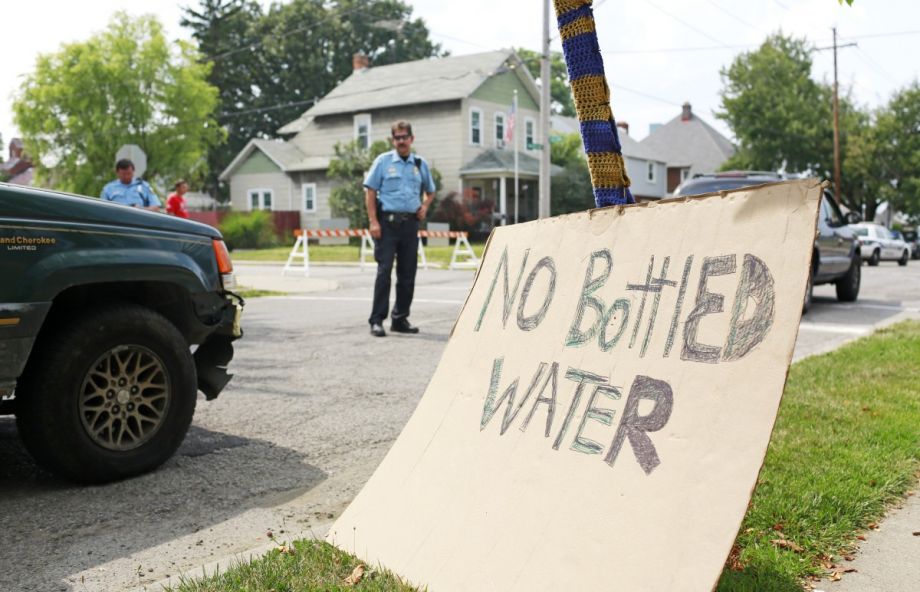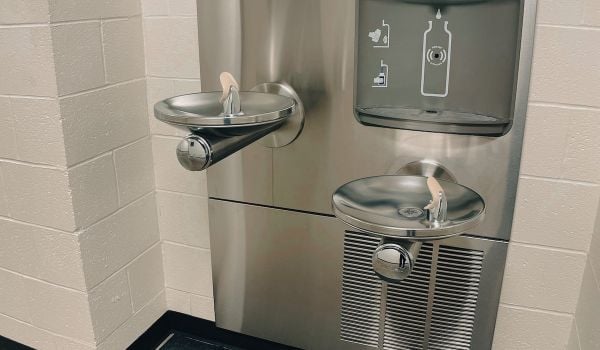Toledo, like many of the United States cities bordering the Great Lakes, has seen some hard economic times over the past 30 years. It has steadily lost population since 1970. But the northern Ohio city has always been rich in one thing: water.
In the past few days, the people of Toledo have been finding out just how precarious even that seemingly limitless resource can be.
Early on the morning of August 2nd, the city issued an alarming advisory, warning that the city’s tap water was unsafe for drinking. A bloom of blue-green algae in Lake Erie, which provides water for half a million people through Toledo’s water system, had resulted in high levels of microcystin, which can cause nausea, diarrhea and even liver damage if consumed by humans or other animals. Boiling the water wouldn’t help, because the toxin would only become more concentrated.
On Monday morning August 4th, Toledo’s mayor lifted the advisory, after residents had spent the weekend dependent on what bottled water they could find at emergency distribution centers or in stores, where the shelves were quickly cleared. But chances are, the people living on the shores of Lake Erie have not heard the last of microcystin.
Scientists believe the primary cause of the algal blooms is runoff of excess fertilizer from large-scale agricultural operations, as well as leaky septic systems, livestock facilities and other sources of nutrients such as phosphorus that throw the lake’s ecosystem out of balance. Changing weather patterns, including heavier rainfall and hotter summers, are also suspected to contribute to the problem.
Lake Erie is a lot cleaner than it was in the worst days of industrial pollution in the 20th century, thanks to the Clean Water Act of 1972 and the federal ban on phosphorus in laundry detergent, which went into effect in 1988. But algal blooms have been increasingly pervasive and persistent in recent years. There was a particularly bad bloom in 2011, an indication of the resurgence of a problem that had been in decline.
This is the first time that the drinking water of a major city has been affected, because this bloom was right around the intakes for the Toledo water treatment plant. But in September of last year, in a harbinger of what happened in Toledo this summer, the small community of Carroll Township, on the shore of Lake Erie about 40 miles east of Toledo, had to shut down its water treatment plant because of an algal bloom.
Environmentalists have been warning for years that the nutrient pollution flowing into the Great Lakes was reaching critical levels, threatening not only drinking water but also the lake’s fish population and its tourism industry. “There is a systemic challenge that we face out here on the Great Lakes that is actually much bigger than this one crisis,” Collin O’Mara of the National Wildlife Federation told NBC News. “Unfortunately, this crisis could just be the tip of the iceberg unless we begin to address it.”
The environmental group Circle of Blue reports that scientists hypothesize changing farming methods could be contributing to the algae explosion. It has been difficult, however, to pinpoint exactly what types of fertilizers, crops or cultivation practices are behind the problem. The complexity of the interrelationships among farmland, urban water systems and the water that feeds into the lake make it difficult to lay blame in any one place.
That, in turn, makes it difficult to find effective solutions and muster the political will to push them through. While the state of Ohio earlier this year enacted legislation requiring most farmers to receive training in the use of fertilizers, the idea of restrictions on fertilizer use has gone nowhere.
At least one politician is hoping this bloom will change that. The mayor of Toledo, D. Michael Collins, put it this way at a press conference about the crisis: “People are finally waking up to the fact that this is not acceptable.”
The Works is made possible with the support of the Surdna Foundation.

Sarah Goodyear has written about cities for a variety of publications, including CityLab, Grist and Streetsblog. She lives in Brooklyn.











